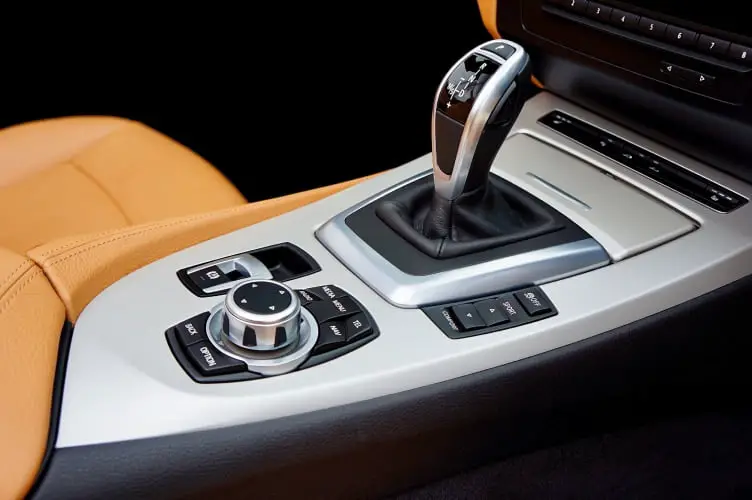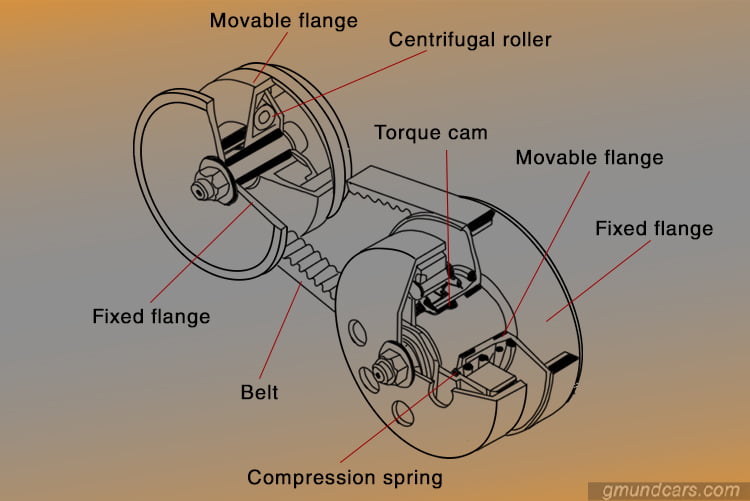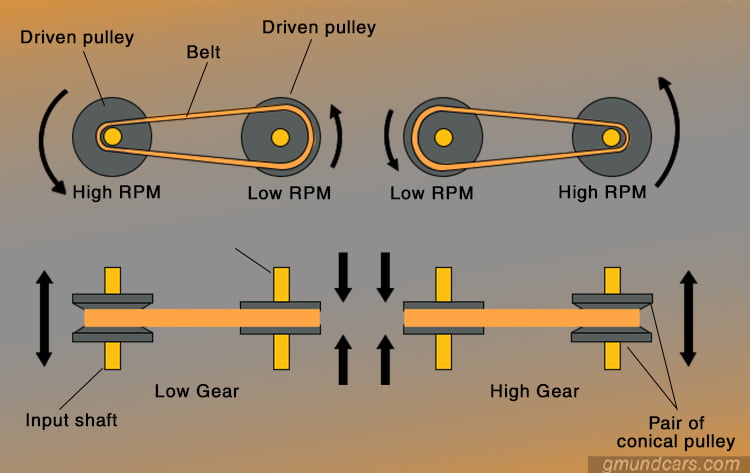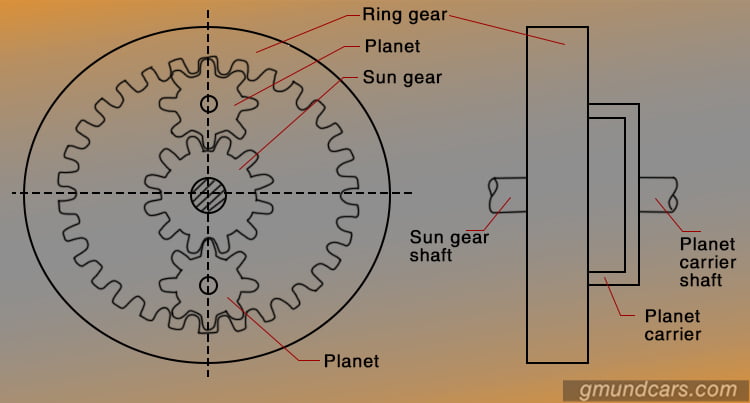The debate between CVT and automatic transmission has persisted for quite some time. The deciding factor of which one is best for you hinges on the type of driving experience you desire. You might favor manual gear shifting. Alternatively, you might like a car that autonomously adjusts the gear in relation to your driving speed, as opposed to a manual one.
A car with a CVT transmission runs smoothly since you gradually change the gear from time to time. Another thing that you need to consider is the cost and maintenance of the two transmissions. If you are frequently going to drive on steep roads, an automatic transmission would not be the best choice. Unfortunately, it does not have the desired control of the power used while climbing.
This article will give you a better comparison between CVT transmission and automatic.
What Does A Transmission Do?
A transmission is a motor part that controls the power transmission from the engine to the car’s wheels proportionally. Additionally, the transmission controls the directional force and speed of the vehicle simultaneously. The two major types of transmissions are Continuously Variable Transmission and Automatic Transmission.
The main role is that it assists in accelerating or decelerating the car without overworking the engine. Ideally, the transmission utilizes the power generated from the engine to spin the car wheels. The engine also runs at different revolutions per minute (RPM).
CVT Transmission And Automatic Transmission Comparison
CVT Transmission And Automatic Transmission Difference
| CVT transmission | Automatic transmission | |
|---|---|---|
| Structure | A CVT transmission has a simple structure compared to an automatic transmission - Two pulleys - A drive pulley and driven pulley - A belt - Torque-sensing pulley - Microprocessors - Sensors. | The components of an automatic transmission: - Torque converter - Planetary gear set - Pump - Stator - Turbine. |
| Operating principle | - The belt typically transfers the power in between the pulley. The engine speed and the wheels’ speed is well-defined. - The indirect rotation causes the CVT transmission to have low torque. Therefore, the torque ratio can't be maintained to an ideal point due to a lack of gearing. - The nature of the CVT transmission having varying gear ratios makes the car perform at high efficiency. | - It is the stator that multiplies torque from the engine to keep the car moving. When the car gets to constant acceleration, less torque is sent. |
| Applications | - A car with a CVT transmission can be used in any road condition. - CVTs are used on tractors, racing cars, motor scooters, golf carts, power generators, and milling machines. | - Automatic transmission is used in vehicles that do not require frequent gear changes while driving. |
| Types | Different CVTs are made differently and operate differently according to their assembly. The main types of CVT transmission are: - Ratcheting CVT - Toroidal CVT - Hydraulic CVT - Cone CVT - Electric CVT - Epicyclic CVT | Different automatic transmissions are built to work under different principles. The types of automatic transmissions are: - Hydraulic automatic transmission - Automated manual transmission - Dual-clutch transmission - Electronic automatic transmission |
| Fuel economy | - The CVT transmission is fuel-efficient as it does not consume more fuel than the required quantity. - If you drive at a steady speed, the number of revolutions decreases that is directly proportional to the fuel consumption. | - The fact that automatic transmission has fixed gears, makes the fuel consumption more. - The more you accelerate, the more power generation from the engine leads to high fuel intake. Power loss in the hydraulic torque converter leads to that intake. |
| Acceleration | - The smooth operation of this transmission makes it possible to have good acceleration. The stable and continuous power transmission plays a major role in car acceleration. | - The gears are dependent on the vehicle’s speed at a given time. Cars with automatic transmission are slower because the driver does not use the clutch. |
| Driving experience | - The gearbox has stationary parts that enhance smooth driving. - Beginners should start with cars that have CVT transmissions. The reason is that the driver does not have to struggle with the gear shifting, thus can easily control the speed and power | - When driving an automatic car, you can experience the sporty style. The car can automatically increase the revving capacity and the shift points. The driver can feel the relationship between the car’s speed and the engine power at a given time. |
| Durability/Lifespan | - CVT transmission requires regular service, therefore, it might cost you more though it performs well. - The transmission fluid has to be replaced after every 60,000 miles covered. | - Automatic transmission has a long life span compared to CVT transmission. It can last about seven years before servicing and changing the transmission fluid. - The lifespan is approximately 200,000 miles covered. Therefore, this makes it economical. |
| Size | - it is up to the driver to choose the gear ratio they need. | - The planetary gear has the ring and sun gear as the input gears. Therefore, the transmission picks the gear directly proportional to the speed of the car. |
Read more: Transmission flush: Never do it before reading this guide
CVT Transmission And Automatic Transmission Similarity

The similarity in the Gearbox symbol
- P – This indicates the PARK set. When the gear shifter is at this point, all the gears are locked. This is the ideal gear for packing the car.
- R – This indicates the REVERSE setting. If the gear shifter is at this point, the drive shaft happens to shift backward. The car can only move backward and not forward.
- N – This indicates the NEUTRAL setting. This neutral gear is applicable when the vehicle is too slow.
- D – This indicates the DRIVE setting. There are three levels which are D1, D2, and D3. A driver shifts to the different levels according to their speed.
- L – This indicates the LOW DRIVE GEAR.
- S – This indicates the SPORT mode.
- M – This indicates the MANUAL setting. The manual gear allows the driver to shift the transmission manually using paddle shifters.
CVT Transmission And Automatic Transmission For Details
CVT Transmission
Definition
A CVT transmission is a continuously variable transmission that changes smoothly through a continuous range of gear ratios while driving. Therefore, you don’t have to make hard shifts in between. This smooth operation promotes a constant angular velocity dependent on the output speed.
Structure
The Continuously Variable Transmission has the following components:
- Driving pulley – receives the generated power from the engine.
- Driven pulley – transmits the power received from the driving pulley to the driveshaft.
- Sensors and microprocessors– measure the revolutions per minute in the engine. These sensors also monitor the temperature, pressure, speed of the moving parts in the system, and throttle position.
- A belt

Types
Not all CVTs are the same. Various transmission types work under distinct mechanisms. The different types are:
- Hydrostatic CVT
- Pulley-based CVT
- Roller-based CVT
- Naudic incremental CVT
- Radial roller CVT
- Planetary CVT
- Magnetic CVT
- Infinitely Variable Transmission
- Ratcheting CVT
- Cone CVT
How Does It Operate?

The flexibility of the CVT makes it possible for the angular velocity to remain constant. Additionally, the pulleys in this transmission make the car have an infinite variability between the highest and lowest gears. The two pulleys in the CVT have a gap between their discs. The gap allows the belt to move up or down on the pulleys. This movement influences the increase or decrease in the diameter of the virtual gear formed on both sides. The pulleys increase and decrease diameter alternatively to make the belt firm. The transmission adjusts the diameter of the drive pulley and the driven pulley.
Therefore, at this point, a gear ratio is provided. The gap between the pulleys varies due to the centrifugal force. Technically, the diameter changes gradually depending on the speed. This results in the continuous gear ratio change.
It is essential to note that the engine is connected to one pulley, while the other pulley is attached to the transmission. People tend to use rubber belts these recent car models since they are durable and flexible.
Read more: Transmission leak: Symptoms, causes and repair guide
Automatic Transmission
Definition
The automatic transmission causes the engine to run in its small range of speeds to output a wider range of speeds. This type of transmission does not require manual gear shifting.
Structure
The major components of the automated transmission include:
- The hydraulic control combines the system parts to regulate the transmission fluid. Therefore, the hydraulic control is in charge of the generation of pressure. Ideally, the hydraulic control accomplishes the automatic gear shifting.
- The torque converter is the component that transmits power from the engine.
- The oil pump circulates the necessary fluid pressure for the hydraulic system.
- The planetary gear has two inputs and one output. The planetary gear can cause gear reduction.
- The valve body controls the gear selection and shifts timing.
Types
The three types of automatic transmission are:
- Dual-clutch transmissions
- Automated manual transmissions
- Electronically controlled transmissions
How Does It Operate?

The gear locking happens when the engine is not running. At this moment, the transmission fluid is not pressurized. When the engine is running, power transmission occurs in the oil pump. The pressurized transmission fluid influences the functioning of the turbine of the torque converter.
The transmission fluid lubricates the system and transmits torque. The turbine then increases the fuel power and transmits it back to the turbine with more power. This cycle produces a vortex power rotation that spins the turbine and the attached central shaft. The oil pump pressurizes the transmission fluid to influence the gear change to the car’s speed.
The gears are arranged systematically according to the power that will flow from one gear to another. The two inputs in the planetary gear are sun gear and ring gear. In this planetary gear set, different output speeds occur due to the input to the sun and the ring gear. The intermediate shaft interconnects the input and output speeds.
Read more: Low transmission fluid: Symptoms, causes, and repair guide
CVT Transmission Vs. Automatic Transmission: Which One Should I buy?
When it comes to choosing between a CVT transmission and an automatic transmission, it all depends on you. One has to weigh the advantages and disadvantages of each and see what will be most suitable for you.
Thanks to pulleys and a belt for proper operation instead of fixed gear stages, car owners can enjoy a smooth experience while driving. The CVT transmission is fuel-efficient, thus can save a few coins there. However, maintenance is costly since the transmission fluid is changed frequently. If you are not planning to use the car for long periods, it might last longer than usual.
The automatic transmission has a well-defined correspondence between the vehicle’s speed and the engine. The drawback of this transmission is that it consumes more fuel for better functioning.